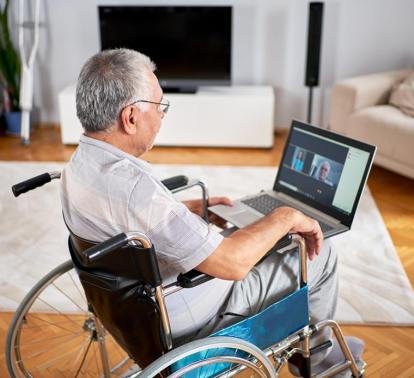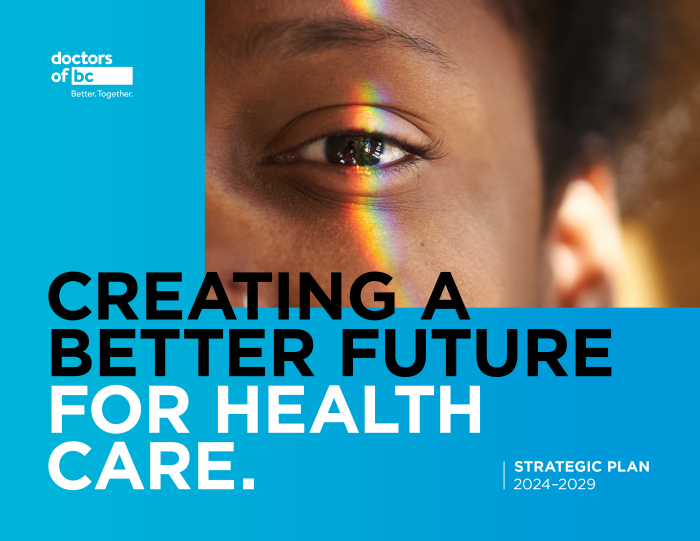- Managing your Practice
-
- Your Benefits
-

Introducing the ultimate Club MD experience
From work to play, and everything in between, we provide you with access to hundreds of deals from recognizable, best-in-class brands, elevating every facet of your life – from practice supports to entertainment, restaurants, electronics, travel, health and wellness, and more. Your Club MD membership ensures that these deals are exclusive to you, eliminating the need to search or negotiate.
Welcome to the ultimate Club MD experience. Your membership, your choices, your journey.
-
- Advocacy & Policy
-
- Collaboration
- News & Events
-

Stay Informed
Stay up to date with important information that impacts the profession and your practice. Doctors of BC provides a range of newsletters that target areas of interest to you.
Subscribe to the President's Letter
Subscribe to Newsletters
-
- About Us
-

The best way to predict the future is to create it
November 3, 2020
President's Blog
Doctors of BC strives to be a leader in BC’s changing health system. We proactively monitor trends, we engage with physicians and stakeholders, and we work collaboratively to improve health services across all spectrums of care – including our pandemic response. But as a profession we have a collective responsibility to look to the future and ensure that our significant knowledge and expertise leads the way in health system redesign. But how can we be certain of a system redesign that provides our patients with the most timely and optimal care? Well, we create it.
 I was recently a panelist at the Vancouver Board of Trade Health Care Forum 2020. Our moderator, André Picard, said that the key to a successful healthcare system in Canada was to ensure we have the “Right Care, in the Right Place, at the Right Time, by the Right People.” And while I agree, in our post pandemic world I would also add: with the Right Clinical Assessment Model and at the Right Price.
I was recently a panelist at the Vancouver Board of Trade Health Care Forum 2020. Our moderator, André Picard, said that the key to a successful healthcare system in Canada was to ensure we have the “Right Care, in the Right Place, at the Right Time, by the Right People.” And while I agree, in our post pandemic world I would also add: with the Right Clinical Assessment Model and at the Right Price.
COVID-19 accelerated rapid and nimble changes in our behemoth of a healthcare system in a truly unprecedented fashion. Seemingly overnight, our burgeoning virtual care services exploded into mainstream to reduce the risk to patients and providers and to preserve our precious personal protective equipment supplies. And though there remain many unintended consequences and complexities relating to this rapid shift, there can be no doubt that virtual care is here to stay.
Patients enjoy in-home access to their key healthcare provider and will continue to demand it long after Covid. For the most part it has benefited many, especially those in remote and rural areas who previously faced long travels to seek even the most routine care. Yes, access to adequate broadband remains a challenge in many areas of BC, but the travel cost savings alone should warrant an ongoing role for telehealth care at home.
 Physicians are growing accustomed to consulting with patients by telephone or one of many video platforms. We know not everything can be properly assessed or treated virtually, even though people will hold up the most remarkable things to the camera. There is no health without mental health and yet it is challenging to fully evaluate a patient’s mental health virtually, particularly if the visit is by phone. Subtle clues such as dress, personal hygiene, and body positioning are not always congruent with what patients vocalize. Some serious conditions have fallen through the cracks and shown up in our acute care system in a more advanced state than they previously may have. To help prevent this, our profession will need to implement better screening and assessment tools so we know the appropriate response to the many new situations that we have and will continue to face. When is escalation to in-person care required? Can we make these predictions safely to ensure the patient is seen in the right place by the right person the first time? Who should the patient be expected to consult with initially and how? What should patients expect in terms of a response time? Implementing 24/7 care to a particular provider is not a sustainable model, so how do we create greater connectivity in our healthcare system that allows us to appropriately share patient information across sites and providers in a way that supports patient access to care? And how do we ensure complete privacy and security?
Physicians are growing accustomed to consulting with patients by telephone or one of many video platforms. We know not everything can be properly assessed or treated virtually, even though people will hold up the most remarkable things to the camera. There is no health without mental health and yet it is challenging to fully evaluate a patient’s mental health virtually, particularly if the visit is by phone. Subtle clues such as dress, personal hygiene, and body positioning are not always congruent with what patients vocalize. Some serious conditions have fallen through the cracks and shown up in our acute care system in a more advanced state than they previously may have. To help prevent this, our profession will need to implement better screening and assessment tools so we know the appropriate response to the many new situations that we have and will continue to face. When is escalation to in-person care required? Can we make these predictions safely to ensure the patient is seen in the right place by the right person the first time? Who should the patient be expected to consult with initially and how? What should patients expect in terms of a response time? Implementing 24/7 care to a particular provider is not a sustainable model, so how do we create greater connectivity in our healthcare system that allows us to appropriately share patient information across sites and providers in a way that supports patient access to care? And how do we ensure complete privacy and security?
One thing evidence has shown is that long-term attachment to the same team of primary care providers results in fewer investigations, better overall health outcomes, and less cost to the system. And yet, episodic virtual-only services are on every TV and bus stop. Our network of primary care providers is at an all-time low and the rising cost of doing business and lack of work-life balance is eroding the very backbone of our healthcare system. We need to ensure everyone has access to a primary care team, particularly our most vulnerable: seniors, maternal and child, chronic diseases, rural and remote populations, mental health and addictions. Openly advocating for better upstream preventative care will reduce costs and improve the health of our population.
The need for doctors voices in re-imagining healthcare delivery has never been greater. As has always been the case, new innovations present a ‘hump’ to climb over, but once that hump has been surmounted, we will likely be better off than before. So, as we emerge from this global crisis with a completely new health care system, one that employs the best of in-person and virtual care, let’s ensure it meets patients’ needs, supports doctors, and is financially sustainable. Let’s work to create the future and stop trying to predict it.
- Dr Kathleen Ross




